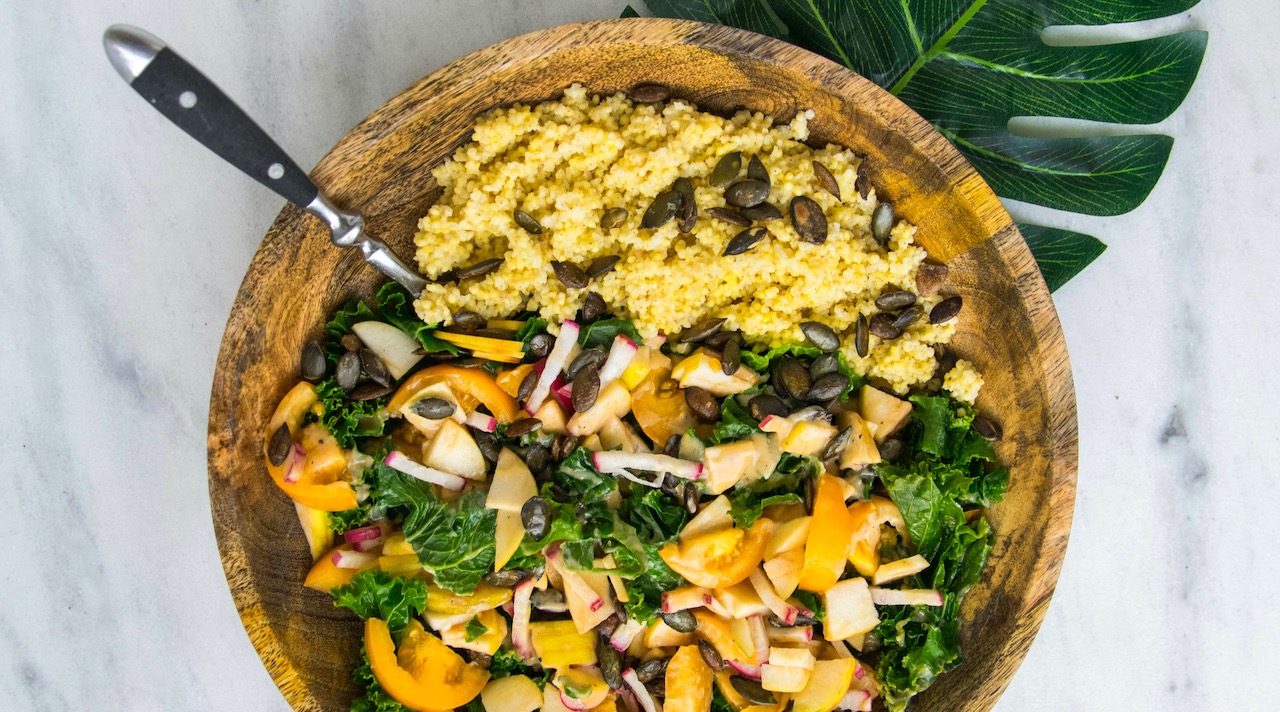
As someone with thyroid disease, I’ve been told a number of times to eat a gluten-free diet. The alternative health community strongly suggests that going gluten-free is one of the first steps to managing your symptoms.
And while science has not found a link between gluten and thyroid function, there is evidence that the gluten-free lifestyle can help relieve symptoms.
But it’s not as simple as just cutting gluten out of your diet. For me, the more important step has been creating healthy eating habits. After all, a gluten-free diet will not erase bad eating habits, but it can amplify them.
Going gluten free, for example, shined a light on things like my addiction to crackers of any kind, and my reliance on only a handful of foods when I should have been eating a more diverse diet all along.
Here are a few of the pitfalls I’ve encountered when switching to a gluten-free diet.
1. Swapping one processed food for another
One of the hardest things for me is not relying too heavily on easy fixes. For example, when I switched to a gluten-free diet, I stopped eating wheat crackers but I replaced them with a gluten-free alternative. The gluten-free cracker, while it might have healthier ingredients, is still a processed food.
Quitting gluten was one step, but more importantly I needed to cut back on processed foods and replace them with healthier options.
2. Replacing a grain with something other than a grain
Whole grains are a pretty important part of our diet. “A high intake of whole grains has been associated with a reduced risk of type 2 diabetes, coronary heart disease, and obesity.” It’s important to replace lost grains from wheat with other whole grains.
When I first went gluten-free I relied too heavily on almond flour. One day while I was making a recipe that called for 1.5 cups of it, I did the math. It just didn’t make sense to me to consume that much of a nut as a replacement for a grain.
That’s when I started paying closer attention to my ingredient swaps. Almond flour is great in some pancakes and protein balls but it’s not the “flour” I lean on when it comes to baking and cooking.
Some of the gluten-free grains I experiment with now include amaranth, sorghum, and buckwheat.
The week I added amaranth to my rotation for the first time, I cooked it up for dinner one night, then mixed the leftovers with my salad for lunch the next day. I also made protein balls with puffed amaranth that I popped on the stove.
3. Not enough diversity
We constantly hear about the importance of a balanced diet, but diversity might be even better than balance, or at least a key pathway to balance. The pitfall for me is when I find a few favorite foods or recipes and just eat those time and again.
When I discovered coconut products as a good alternative to dairy, I went coconut crazy. After a few weeks of recipes that called for things like coconut milk, coconut flour, coconut yogurt, and coconut aminos, I got leery of leaning so heavily on a single food source.
Then Will Bulsiewicz, a gut health MD, inspired me. He emphasizes the importance of food diversity, especially when it comes to plant-based foods. He challenges his followers to count their fiber sources and try to hit a minimum of 30 different plant-based foods in one week.
In the end, cutting out gluten was not necessarily the path to healthier eating for me. In fact, gluten probably wouldn’t be so bad for me personally if I didn’t consume it in such large quantities before.
Instead, learning how to eat a more balanced and diverse diet has been far more important to my health than switching to a gluten-free diet.
I am not a doctor, scientist or dietician and this is not intended to be medical advice. The information here is based on my own personal research and experience. I highly recommend working with a registered dietician to figure out what works best for your body.
